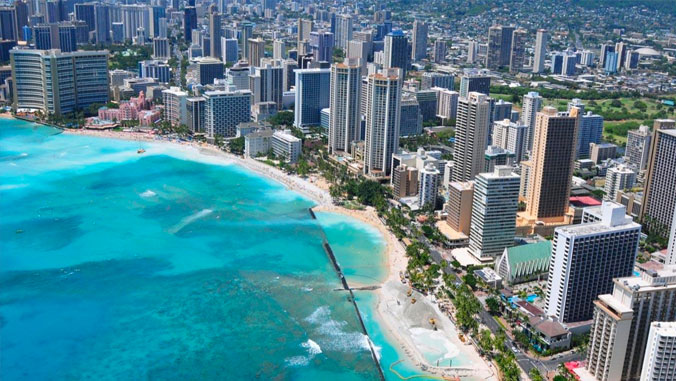
A new University of Hawaiʻi Economic Research Organization (UHERO) forecast provides three economic scenarios as Hawaiʻi attempts to recover from the effects of the COVID-19 pandemic.
In the baseline forecast, UHERO predicts tourists will return beginning in late July, and the number of arrivals for 2020 will be nearly 60 percent lower than in 2019. The economic impact is anticipated to be larger on the neighbor islands than on Oʻahu, due to their greater reliance on the tourism industry. Unemployment rates are expected to average more than 20 percent in 2020 for each of the neighbor islands.
UHERO’s optimistic scenario calls for a moderate return of visitors by late summer, with businesses catering primarily to the local market recovering by about 80–85 percent by late fall. Two-thirds of job losses are also expected to be recovered by 2021. Despite a relatively quick return, the optimistic scenario still forecasts lower visitor numbers for the next five years as compared to 2019. These projections assume good control of the coronavirus nationally and internationally within the next two months.
The pessimistic scenario does not forecast significant tourism reopening until fall 2020, and the number of visitor arrivals will be down about 70 percent and remaining significantly below the 2019 peak through the end of the forecast horizon. In 2020, real income would also decline more than 6 percent, and the statewide unemployment rate will be at least 9 percent in 2022.
UHERO, in the UH Mānoa College of Social Sciences, said the state’s reliance on the tourism industry will cause Hawaiʻi to recover more slowly than the rest of the nation. The recovery process depends on government policy responses. More federal support is desperately needed, and according to the report, the state needs to spend its available resources now to preserve companies, worker skills and consumer and business finances.

